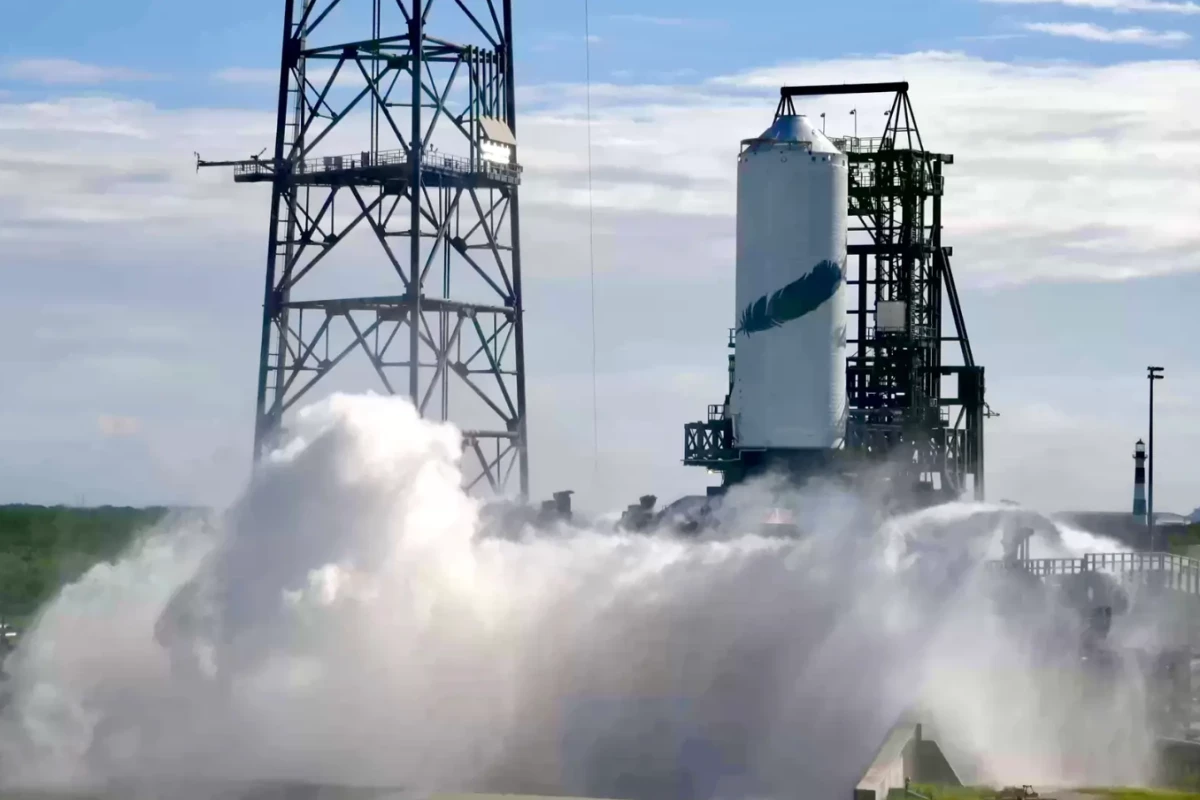Blue Origin has conducted the first hot-fire static test of the fully integrated second stage of the company's New Glenn orbital rocket. The 15-second test took place on September 23, 2024 at the Cape Canaveral Space Force Station in Florida.
The Monday test of the second stage at Launch Complex 36 marks a major step on the way to the maiden flight on the NG-1 mission slated for November, which will carry the US Space Force's Blue Ring space platform into orbit. Once operational, Blue Ring will be capable of refueling, transporting, and hosting satellites.
The purpose of the hot-fire exercise was to confirm the proper interaction of the second stage subsystems as well as the two BE-3U engines and ground control systems. This included the helium pressurizing system for the liquid hydrogen and oxygen tanks for the engines, the thrust vector system, and the start-up and shutdown sequences.
The start-up and shutdown tests were particularly important because the BE-3U engines have to be able to restart up to three times per flight.
Standing 23.4 m (77 ft) tall and with a diameter of 7 m (23 ft), the second stage will sit atop the New Glenn launch vehicle. Each engine can generate 173,00 lb of vacuum thrust, though they were only designed for 160,000 lb. According to the company, this puts them at the top of the list of flown thrust-to-weight ratio hydrogen engines.
Source: Blue Origin





